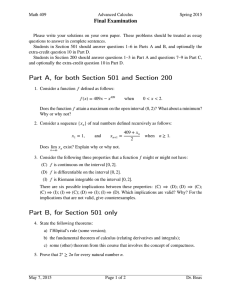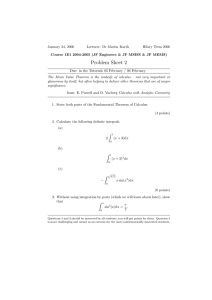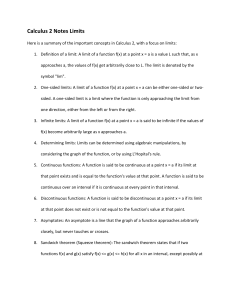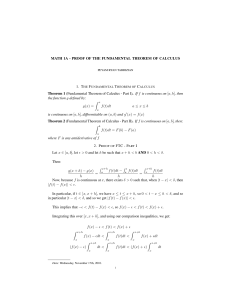Math 409 Solutions to Examination 2 April 4, 2000
advertisement
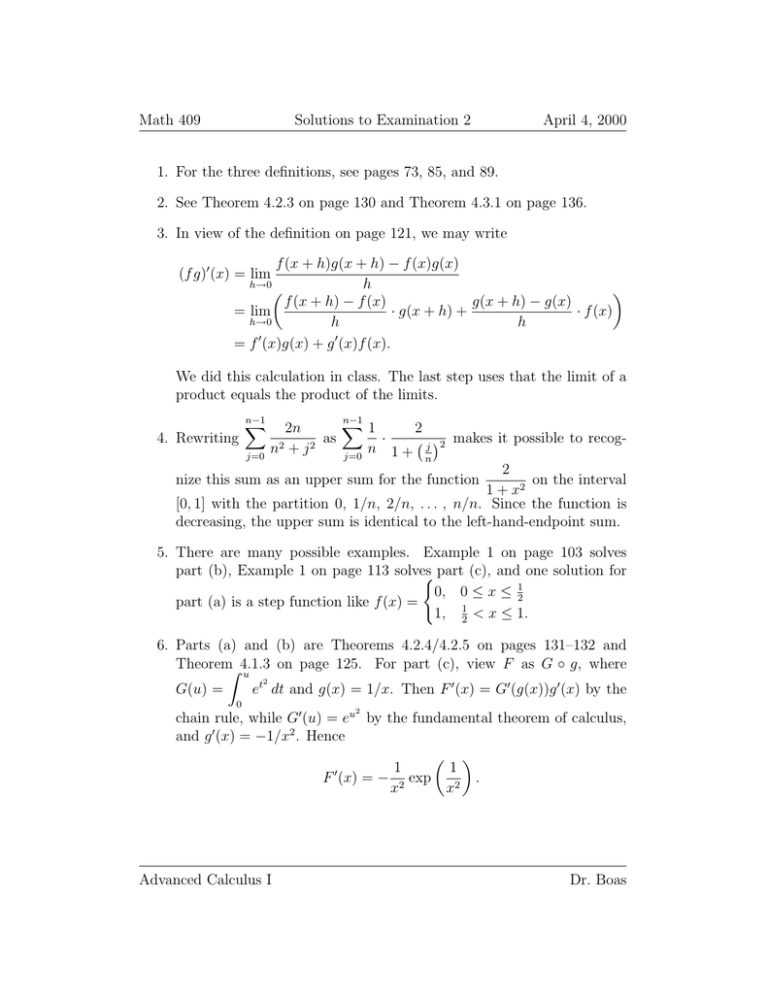
Math 409 Solutions to Examination 2 April 4, 2000 1. For the three definitions, see pages 73, 85, and 89. 2. See Theorem 4.2.3 on page 130 and Theorem 4.3.1 on page 136. 3. In view of the definition on page 121, we may write f (x + h)g(x + h) − f (x)g(x) h→0 h g(x + h) − g(x) f (x + h) − f (x) · g(x + h) + · f (x) = lim h→0 h h = f 0 (x)g(x) + g 0 (x)f (x). (f g)0 (x) = lim We did this calculation in class. The last step uses that the limit of a product equals the product of the limits. n−1 X n−1 X 2 2n 1 · as 4. Rewriting makes it possible to recog2 2 n +j n 1+ j 2 j=0 j=0 n 2 nize this sum as an upper sum for the function on the interval 1 + x2 [0, 1] with the partition 0, 1/n, 2/n, . . . , n/n. Since the function is decreasing, the upper sum is identical to the left-hand-endpoint sum. 5. There are many possible examples. Example 1 on page 103 solves part (b), Example 1 on page 113 solves ( part (c), and one solution for 0, 0 ≤ x ≤ 12 part (a) is a step function like f (x) = 1, 12 < x ≤ 1. 6. Parts (a) and (b) are Theorems 4.2.4/4.2.5 on pages 131–132 and TheoremZ 4.1.3 on page 125. For part (c), view F as G ◦ g, where u G(u) = 2 et dt and g(x) = 1/x. Then F 0 (x) = G0 (g(x))g 0 (x) by the 0 chain rule, while G0 (u) = eu by the fundamental theorem of calculus, and g 0 (x) = −1/x2 . Hence 1 1 0 F (x) = − 2 exp . x x2 Advanced Calculus I 2 Dr. Boas


